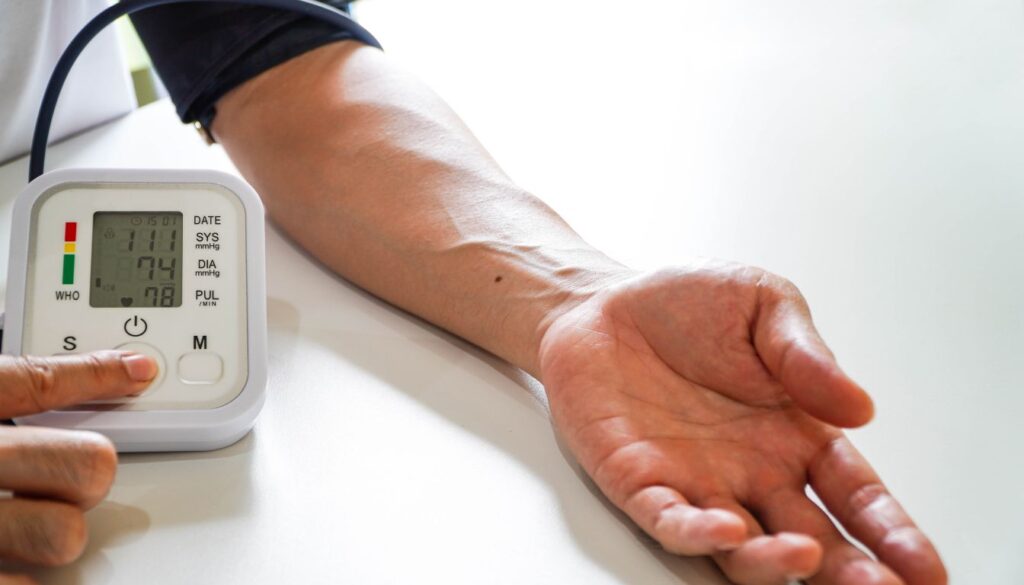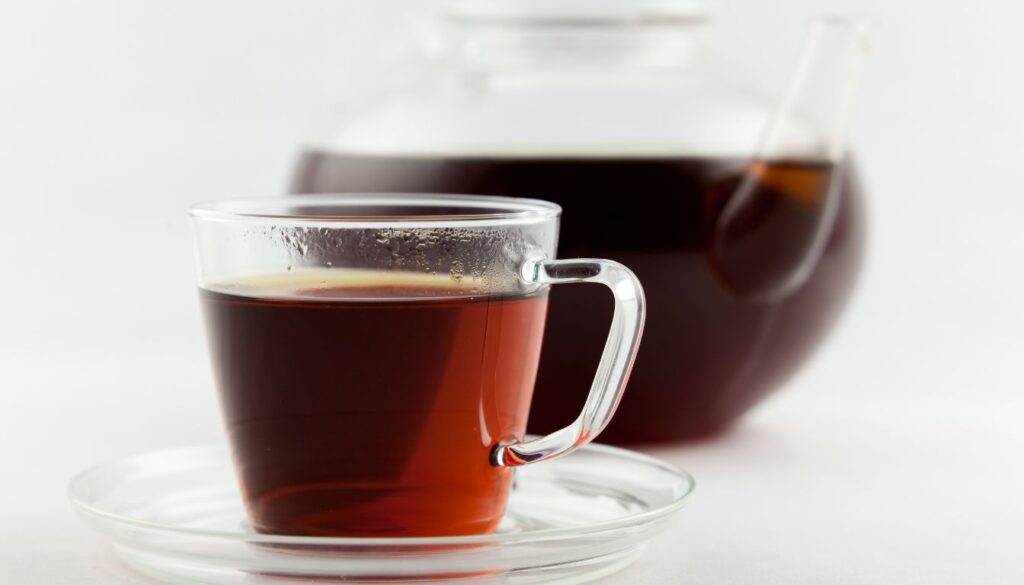If you’re looking for a natural way to support healthy blood pressure levels, rooibos tea might just be your new best friend. This caffeine-free herbal tea, originating from South Africa, has gained popularity not only for its rich flavor but also for its potential health benefits. Packed with antioxidants and unique compounds, rooibos could play a vital role in promoting cardiovascular health.
Imagine sipping a warm cup of rooibos while knowing you’re doing something great for your body. Research suggests that this delightful brew may help manage blood pressure, making it an appealing choice for those seeking a holistic approach to wellness. Let’s dive into the science behind rooibos and discover how it can be a delicious addition to your health routine.
Overview of Rooibos
Rooibos is a fragrant herbal tea from South Africa that’s gaining popularity for its many health benefits. This caffeine-free beverage offers a delightful flavor and is rich in antioxidants, making it a great addition to any wellness routine.
What Is Rooibos – Lowering Blood Pressure Naturally with Rooibos Tea
Rooibos comes from the leaves of the Aspalathus linearis plant. It’s often enjoyed as a warm drink, but it also tastes great when iced. The deep red color gives the tea its name, which means “red bush” in Afrikaans. Many people love rooibos for its smooth, slightly sweet taste that pairs well with various flavors, such as vanilla or caramel. It’s like hugging a cozy blanket on a winter day, but in a cup.
Health Benefits of Rooibos
Rooibos offers various health benefits that can enhance daily living. Its high antioxidant content supports overall health by combating free radicals. Studies suggest it may help maintain healthy blood pressure levels, providing heart support without the jitters caffeine can cause.
Some research indicates rooibos might even improve bone health, which is a bonus for tea lovers. Plus, it may aid digestion, making it a soothing option after meals. Enjoying a cup of rooibos can be a simple way to promote well-being. So, why not give it a try?
Understanding Blood Pressure

Blood pressure measures the force of blood pushing against the walls of the arteries. It consists of two numbers: systolic and diastolic. Systolic pressure occurs when the heart beats, while diastolic pressure happens when the heart rests between beats.
What Is Blood Pressure – Lowering Blood Pressure Naturally with Rooibos Tea
Blood pressure is a vital sign indicating how well the heart and blood vessels function. I monitor it to assess health and detect potential issues. Doctors measure blood pressure using a sphygmomanometer. Normal levels usually register around 120/80 mmHg. Readings above this can suggest health concerns, while lower numbers may indicate other conditions.
Common Causes of High Blood Pressure
High blood pressure, or hypertension, can stem from several factors. Genetics play a role; if my family has a history of hypertension, my chances increase. A sedentary lifestyle can contribute, too. When I sit around too much, it’s easier for my blood pressure to rise.
Obesity adds more strain on my heart, and a high-salt diet can make it worse. Stress often leads to temporary spikes in blood pressure, so recognizing stressors becomes essential. Lastly, excessive alcohol and tobacco use can significantly impact blood pressure. Making small lifestyle changes can help maintain healthier levels.
Rooibos and Blood Pressure
Rooibos may support healthy blood pressure levels. This caffeine-free tea not only tastes great but also boasts a range of health benefits.
How Rooibos Affects Blood Pressure – Lowering Blood Pressure Naturally with Rooibos Tea
Rooibos contains compounds that may help relax blood vessels. Relaxed blood vessels lead to better blood flow and lower blood pressure. Its antispasmodic properties could reduce tension in blood vessels. Consequently, I find that enjoying a cup of rooibos promotes a soothing experience, making it great for calming down after a long day.
Research Studies on Rooibos and Blood Pressure
Several studies highlight rooibos’ potential effects on blood pressure. One study published in the journal Phytotherapy Research found that participants experienced a decrease in blood pressure after drinking rooibos regularly. Another study indicated that rooibos extract helped improve the function of blood vessels. These findings suggest that incorporating rooibos into my daily routine could be beneficial for heart health.
Consuming Rooibos for Better Health

Rooibos tea offers enjoyable health benefits. This flavorful beverage can easily fit into various diets and routines.
Ways to Incorporate Rooibos into Your Diet – Lowering Blood Pressure Naturally with Rooibos Tea
Brewing a cup of rooibos tea is simple. I start with one teaspoon of loose leaves or one tea bag and steep it in hot water for about five to seven minutes. The aroma fills the kitchen, instantly uplifting my mood. I can enjoy it plain, or I can add a splash of milk or a drizzle of honey for extra flavor.
Using rooibos in smoothies adds a delicious twist. I blend cooled rooibos with fruits like bananas and berries, creating a refreshing drink. This mix not only tastes great but also boosts antioxidant intake. Baking? Rooibos can even enhance baked goods like muffins. Just substitute some of the liquid in the recipe with brewed rooibos.
I also like to make iced rooibos tea during warmer months. Simply brew a pot, chill it down, and serve over ice with lemon or mint for a thirst-quencher that’s both tasty and healthy.
Recommended Dosage and Preparation Tips
For daily benefits, I aim for two to three cups of rooibos tea. This amount keeps my blood pressure in check while allowing me to savor its taste. Consuming it regularly provides the best chances of experiencing its positive effects.
When preparing rooibos, simplicity works wonders. I use freshly boiled water to ensure the best flavor. Steeping for the right amount of time enhances its rich, smooth taste. I typically let it steep longer for a stronger brew if I prefer that extra kick.
Mixing rooibos with other ingredients like spices or herbs can also enhance its health benefits. A cinnamon stick or a few slices of ginger work wonders. It turns into a delightful blend that warms the body with every sip. By incorporating rooibos into my daily routine, I enjoy its refreshing taste while reaping its health benefits. It proves that taking care of my health can also be genuinely enjoyable.
Potential Side Effects and Considerations
Rooibos tea offers many benefits, but it’s important to consider potential side effects. Knowing who should avoid rooibos and how it interacts with medications helps ensure a safe experience.
Who Should Avoid Rooibos – Lowering Blood Pressure Naturally with Rooibos Tea
Pregnant women might want to limit rooibos intake. Some studies suggest it could have weak hormonal effects, so caution is wise. People with allergies to legumes should stay away from rooibos as it belongs to the same family. Individuals with chronic kidney disease may also need to exercise caution due to the tea’s potassium content.
If you suffer from low blood pressure, rooibos might also not be for you. Since it can help lower blood pressure, consuming it might not be the best choice. Always consult a healthcare provider if you’re unsure.
Interactions with Medications
Rooibos usually plays nice with most medications, but a few interactions exist. For example, medications that lower blood pressure could have increased effects when combined with rooibos. It’s wise to monitor blood pressure closely if taking such medications.
Anticoagulants, or blood thinners, may interact with rooibos as well. The flavonoids in rooibos could affect how these medications work. Speaking with a doctor or pharmacist can clarify any concerns regarding these interactions.
Overall, staying informed about rooibos is key. By knowing who should avoid it and how it interacts with medications, I can enjoy the benefits safely and wisely.
Before You Go – Lowering Blood Pressure Naturally with Rooibos Tea

Rooibos tea offers a delightful way to support heart health and maintain healthy blood pressure levels. Its unique compounds may help relax blood vessels and improve blood flow, making it a soothing addition to my daily routine.
As I explore the various ways to enjoy rooibos, from brewing a warm cup to blending it into smoothies, I’m reminded of its rich flavor and numerous health benefits. However, it’s crucial to stay informed about potential interactions and consult a healthcare provider if needed.
Incorporating rooibos into my wellness journey not only enhances my health but also adds a delicious twist to my beverage choices. Cheers to a flavorful path toward better blood pressure management! Don’t forget to add theherbprof.com homepage to your favourites so you don’t miss out on future articles.
References – Lowering Blood Pressure Naturally with Rooibos Tea
Little Herb Encyclopedia, by Jack Ritchason; N.D., Woodland Publishing Incorporated, 1995
The Ultimate Healing System, Course Manual, Copyright 1985, Don Lepore
Planetary Herbology, Michael Tierra, C.A., N.D., Lotus Press, 1988
Handbook of Medicinal Herbs, by James A. Duke, Pub. CRP Second Edition 2007
The Complete Medicinal Herbal, by Penelope Ody, Published by Dorling Kindersley
Check the Following Article
Foxglove Flowers: A Guide to Their Charm and Care
Growing Olive Trees from Seeds: A Step-by-Step Guide
Cultivating Ginger Outdoors: Tips for a Thriving Garden
The Great Health Benefits of Lemon Ginger Green Tea
Frequently Asked Questions – Lowering Blood Pressure Naturally with Rooibos Tea
What is rooibos tea?
Rooibos tea is a caffeine-free herbal tea made from the leaves of the Aspalathus linearis plant, native to South Africa. Known for its smooth, slightly sweet flavor, it boasts rich antioxidant properties and various health benefits.
What are the health benefits of rooibos tea?
Rooibos tea may offer several health benefits, including supporting healthy blood pressure, promoting cardiovascular health, improving bone health, and aiding digestion. Its antioxidants help protect the body from oxidative stress.
How does rooibos tea affect blood pressure?
Rooibos tea contains compounds that may help relax blood vessels and improve blood flow, potentially leading to lower blood pressure. Regular consumption has shown promising results in studies on blood pressure reduction.
How should I prepare rooibos tea?
To prepare rooibos tea, steep loose leaves or tea bags in hot water for about 5 to 7 minutes. You can enhance the flavor by adding milk, honey, or spices like cinnamon and ginger.
Can I drink rooibos tea every day?
Yes, it is generally safe to consume rooibos tea daily. For optimal health benefits, it’s recommended to enjoy two to three cups per day, taking care to prepare it properly for the best flavor.
Are there any side effects of rooibos tea?
While rooibos tea is generally safe, pregnant women, individuals with allergies to legumes, and those with certain health conditions should consult a healthcare provider before consuming. It may interact with some medications as well.
How can I incorporate rooibos tea into my diet?
You can enjoy rooibos tea both warm and iced. Try blending it into smoothies, using it in baking, or simply savoring it as a delicious beverage to boost your antioxidant intake.

